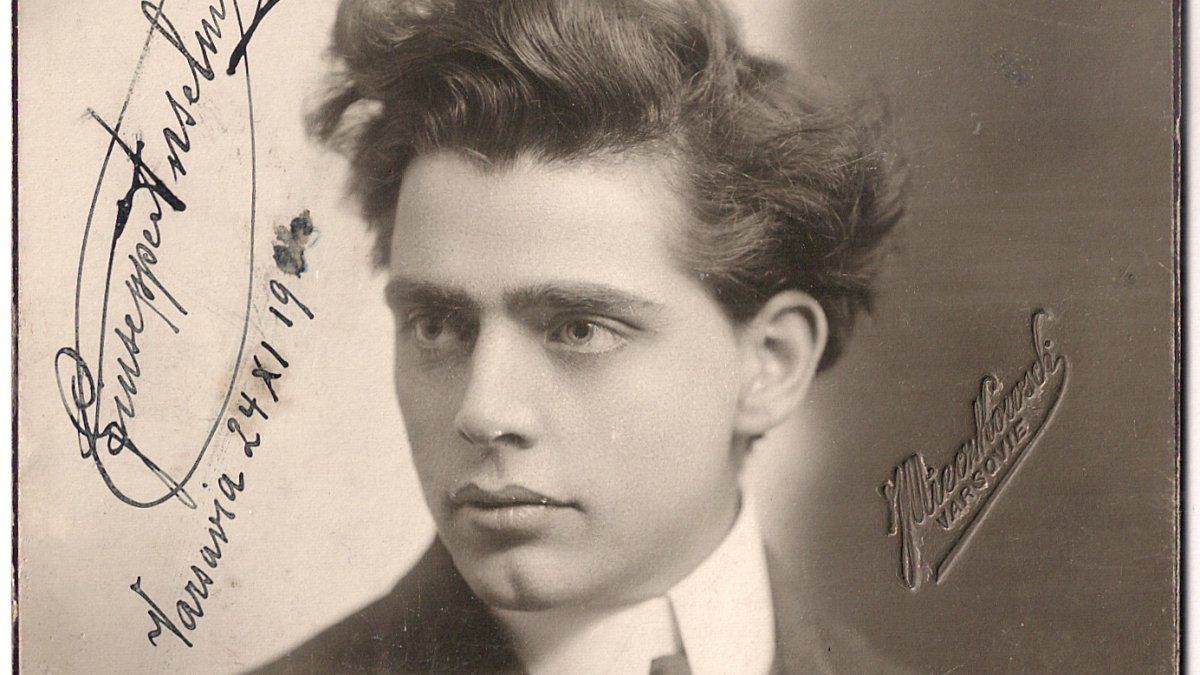One of the biggest hits of Tony BennettThroughout his career, he was “I left my heart in San Francisco” (“I Left My Heart In San Francisco”). The song, sentimental in tone, referred to those who could not enjoy the charms of cities like Paris or New York, ‘Cause her heart was in her hometown San Francisco. Metaphorically, of course. However, the case we are going to deal with was not at all metaphorical.
Sicilian tenor Giuseppe Anselmi (1876-1929), who was the Placido Domingo of his time (in every sense, but at that time #MeToo did not exist), he literally left his heart in Madrid. The famous singer said that it was a city that had given him so much love that, when he died, he wanted his heart to be removed and kept in the museum of the Royal Theater of the Spanish capitalto. That’s how it was done (and then they talk about the bizarreness of rock singers). But the adoration of Anselmi’s heart did not last long. youhad its complications.
The demand for Anselmi’s performances was the subject of constant battles between many opera houses in the world. They all wanted it. Our Teatro Colón, in the opulent Argentina of 1910Centenary year, had the luxury of host him for several months, something that today would be impossible for any lyrical theater, no matter how rich the country, with an international singer of that category. And Anselmi sang seven different operas that year at the Colón: Verdi’s “Rigoletto”, Massenet’s “Manon”, Rossini’s “The Barber of Seville”, Donizetti’s “Don Pasquale”, Puccini’s “La Bohème”, Bellini’s “La sonnambula”, and Gounod’s “Romeo and Juliet”. . In 1911 he did not come, in 1912 he was a guest again and sang 6 operas, the same as in 1913, the last year he visited us, and when (among other titles) he premiered “The Pearl Fishers” by Bizet, an opera that was recently performed again. in the Colon this year.
Anselmi’s voice was so valued as, as was said before, his love skills, and his mere presence caused a sensation among the ladies, who even gave him their personal belongings, and even their underwear in the dressing room. An authentic sexual myth that he lived in other times, those of more liberated (or irresponsible) grandmothers. They say that he was Queen Victoria Eugenia’s favorite.
His last year at Colón was, as was seen, 1913, because Then came the First World War, and was called up. Although he survived the fighting, the experience in the trenches was so hard that he never got over it. Chroniclers of the time, when he resumed his career after the conflict, in 1918 (the year, it must also be remembered, in which the pandemic known as “Spanish fever” spread throughout the world) pointed out that neither his scenic bearing nor his voice, they were the same as before. He survived until 1929, when he died at the age of 53 from pneumonia.; It had been several years since he had not sung or had only been hired by small provincial theaters for roles of no great importance.
Without neglecting the fervor that the Argentine public, and that of other nations, always showed him in his performances, Anselmi kept a weakness for the Spanish, and he made it known in his will when he ordered that his heart be removed, so that was preserved as a relic in ethe Royal Theater of Madrid. The tenor had made his debut there in 1907, three years before his debut at the Colón, and earned a 30% per function than any other singer in the same category.
The choice of the Real had its reasons: such was the devotion that the authorities of that theater felt for the Sicilian artist, that the general director, Louis Paris, asked him for some “personal object” to keep in his facilities. Anselmi’s response exceeded all of his expectations, since he already anticipated to Paris what he later wrote in his will.
Beyond the bizarre nature of the donation, the Real had to comply with a series of unusual legal requirements, since Anselmi died in Italy and his heart, to rest in Madrid, had to cross the borders of a Europe that was several decades away from being unified. The chronicles of that time say that the viscera in question had to wait a whole year in the Museum of Anthropology in Madrid before reaching the Teatro Real.
However, the hardships of Anselmi’s poor heart did not end there. Madrid was about to enter the Civil War, and the bombs that fell on its main lyrical house were about to cause it to disappear. Although the Theater remained standing, a large part of its structure, including its Museum, was destroyed, and the rubble covered a large part of the treasures that were kept there. According to what they say, Anselmi’s heart appeared by chance in a garbage canamid broken bricks and beams, and was only recognized by the small chest in which it was kept.
At the end of the Civil War, the reconstruction works that the Real began prevented the heart from returning to its place, and then it traveled to the National Museum of Almagro, where it is preserved to this day in a silver box. However, the royal Far from giving up the relic, he insists on its return.
However, the story of Anselmi’s heart is not the only eccentricity in the annals of opera in Spain, since another tenor, this time Spanish and before him, Julián Gayarre (1844-1890), donated his pharynx to the Royal at death. For something the Aragonese film director, Luis Bunuel, and the plastic artist Salvador Dali, they created the art they created.
Unlike Anselmi, there are no recorded testimonies of his voice, which the newspapers of the time defined as “angelic”. Victim of a flu epidemic, it was the doctors who attended him on his deathbed who asked his relatives for permission to remove his larynx when he died. Apparently, no one could believe that this “heavenly” sound came from a human body.
And this is how it was done: an “autopsy” of your larynx, however, did not reveal any secret, as if the beauty of a voice were an anatomical matter. What would they do with Gayerre’s larynx next? Well, the doctors decided to donate it to Real Madrid, where it suffered almost the same fate as Anselmi’s heart.. Today it is on display at the Julián Gayarre de Roncal Museum.
Source: Ambito
I am an author and journalist who has worked in the entertainment industry for over a decade. I currently work as a news editor at a major news website, and my focus is on covering the latest trends in entertainment. I also write occasional pieces for other outlets, and have authored two books about the entertainment industry.




